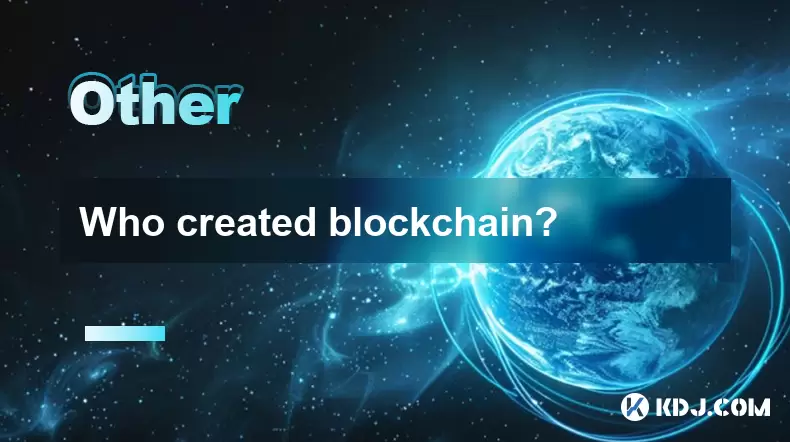-
 Bitcoin
Bitcoin $115200
-2.68% -
 Ethereum
Ethereum $3601
-5.16% -
 XRP
XRP $3.035
-2.96% -
 Tether USDt
Tether USDt $0.9997
-0.04% -
 BNB
BNB $764.5
-5.43% -
 Solana
Solana $168.1
-5.92% -
 USDC
USDC $0.9998
-0.02% -
 Dogecoin
Dogecoin $0.2090
-4.80% -
 TRON
TRON $0.3272
-0.49% -
 Cardano
Cardano $0.7306
-5.00% -
 Hyperliquid
Hyperliquid $39.16
-12.22% -
 Stellar
Stellar $0.3967
-4.96% -
 Sui
Sui $3.566
-5.95% -
 Chainlink
Chainlink $16.55
-6.57% -
 Bitcoin Cash
Bitcoin Cash $552.3
-3.90% -
 Hedera
Hedera $0.2516
-4.69% -
 Avalanche
Avalanche $21.99
-5.75% -
 Toncoin
Toncoin $3.621
-0.28% -
 Ethena USDe
Ethena USDe $1.000
-0.03% -
 UNUS SED LEO
UNUS SED LEO $8.951
0.02% -
 Litecoin
Litecoin $105.9
-3.59% -
 Shiba Inu
Shiba Inu $0.00001232
-5.00% -
 Polkadot
Polkadot $3.640
-5.55% -
 Uniswap
Uniswap $9.048
-7.03% -
 Monero
Monero $301.8
-1.51% -
 Dai
Dai $0.9999
-0.01% -
 Bitget Token
Bitget Token $4.334
-3.66% -
 Pepe
Pepe $0.00001064
-6.17% -
 Cronos
Cronos $0.1367
-5.78% -
 Aave
Aave $259.2
-4.59%
How does zero-knowledge proof reduce on-chain data? What does it optimize?
ZKPs reduce on-chain data by enabling off-chain computation and verification, optimizing transaction throughput, privacy, security, costs, and scalability in blockchain systems.
May 18, 2025 at 10:02 am

Zero-knowledge proofs (ZKPs) have become a pivotal technology in the blockchain and cryptocurrency space, offering significant advantages in terms of privacy, scalability, and efficiency. One of the most compelling benefits of ZKPs is their ability to reduce on-chain data, thereby optimizing several aspects of blockchain operations. In this article, we will explore how zero-knowledge proofs achieve this reduction and what specific elements they optimize.
Understanding Zero-Knowledge Proofs
Before delving into the specifics of how ZKPs reduce on-chain data, it's essential to understand what they are. Zero-knowledge proofs are cryptographic methods that allow one party (the prover) to prove to another party (the verifier) that a given statement is true, without revealing any information beyond the validity of the statement itself. This technology is particularly useful in the context of blockchains, where privacy and efficiency are crucial.
Reducing On-Chain Data with Zero-Knowledge Proofs
One of the primary ways ZKPs reduce on-chain data is by enabling off-chain computation and verification. In traditional blockchain systems, all data and computations must be stored and processed on the blockchain, leading to increased data size and slower transaction times. With ZKPs, complex computations can be performed off-chain, and only the proof of the computation's correctness needs to be stored on the blockchain.
- Perform the computation off-chain: The prover carries out the necessary computation outside of the blockchain network.
- Generate a zero-knowledge proof: The prover creates a ZKP that verifies the correctness of the computation without revealing the underlying data.
- Submit the proof to the blockchain: Only the ZKP is submitted to the blockchain, significantly reducing the amount of data that needs to be stored on-chain.
This approach not only reduces the data footprint on the blockchain but also enhances the privacy of the transactions, as sensitive data remains off-chain.
Optimizing Transaction Throughput
By reducing the amount of data that needs to be processed and stored on the blockchain, ZKPs significantly optimize transaction throughput. In a typical blockchain system, each transaction must be verified by nodes across the network, which can lead to bottlenecks as the number of transactions increases. ZKPs allow for the batching of transactions, where multiple transactions can be bundled together and verified with a single proof.
- Batch multiple transactions: Group several transactions into a single batch.
- Generate a single ZKP: Create one ZKP to verify the entire batch of transactions.
- Submit the batch and proof: The batch and its corresponding proof are submitted to the blockchain, allowing for faster processing and verification.
This method increases the number of transactions that can be processed per block, thereby improving the overall efficiency and scalability of the blockchain.
Enhancing Privacy and Security
Another aspect that ZKPs optimize is privacy and security. In traditional blockchain systems, transaction details are often publicly visible, which can be a concern for users who value their privacy. ZKPs allow users to prove the validity of a transaction without disclosing any sensitive information.
- Conduct a transaction off-chain: Perform the transaction outside of the public blockchain network.
- Generate a ZKP: Create a proof that the transaction is valid without revealing any transaction details.
- Submit the proof on-chain: Only the proof is submitted to the blockchain, ensuring that transaction details remain private.
This approach not only enhances user privacy but also reduces the risk of data breaches and unauthorized access to sensitive information.
Reducing Costs
The reduction of on-chain data through ZKPs also leads to lower transaction costs. In many blockchain networks, the cost of a transaction is directly related to the amount of data that needs to be stored and processed. By minimizing the data footprint, ZKPs can significantly reduce these costs.
- Calculate the transaction off-chain: Perform the necessary calculations outside of the blockchain.
- Generate a ZKP: Create a proof of the calculation's correctness.
- Submit the proof: The proof is submitted to the blockchain, which requires less data and, consequently, lower fees.
This cost-saving aspect makes blockchain technology more accessible and economically viable for a wider range of users and applications.
Improving Scalability
Finally, ZKPs contribute to improving the scalability of blockchain networks. As mentioned earlier, by allowing for off-chain computation and verification, ZKPs reduce the load on the blockchain. This reduction in data and processing requirements allows the blockchain to handle a higher volume of transactions without compromising performance.
- Perform complex computations off-chain: Execute resource-intensive operations outside of the blockchain.
- Verify the results with a ZKP: Use a ZKP to confirm the validity of the off-chain computations.
- Submit the proof on-chain: Only the proof needs to be stored on the blockchain, freeing up resources for other transactions.
This scalability improvement is crucial for the widespread adoption of blockchain technology, as it allows networks to grow and handle increasing demand without significant performance degradation.
Frequently Asked Questions
Q: Can zero-knowledge proofs be used with any blockchain?
A: Zero-knowledge proofs can be implemented on various blockchains, but the specific implementation details may vary depending on the blockchain's architecture and consensus mechanism. Some blockchains have native support for ZKPs, while others may require additional development and integration.
Q: Are zero-knowledge proofs secure?
A: Zero-knowledge proofs are designed to be secure, as they rely on advanced cryptographic techniques. However, like any technology, their security depends on proper implementation and regular updates to address potential vulnerabilities.
Q: How do zero-knowledge proofs affect the transparency of a blockchain?
A: Zero-knowledge proofs can enhance privacy by hiding transaction details, which may reduce the transparency of individual transactions. However, the overall integrity and validity of the blockchain remain intact, as the proofs ensure that transactions are valid without revealing sensitive information.
Q: Can zero-knowledge proofs be used for purposes other than reducing on-chain data?
A: Yes, zero-knowledge proofs have a wide range of applications beyond reducing on-chain data. They can be used for identity verification, confidential voting systems, and secure multi-party computation, among other use cases.
Disclaimer:info@kdj.com
The information provided is not trading advice. kdj.com does not assume any responsibility for any investments made based on the information provided in this article. Cryptocurrencies are highly volatile and it is highly recommended that you invest with caution after thorough research!
If you believe that the content used on this website infringes your copyright, please contact us immediately (info@kdj.com) and we will delete it promptly.
- Cardano Price, Pi Network, and Crypto Presales: What's the Buzz?
- 2025-08-02 08:50:12
- XRP Fund Success: Teucrium CEO Reveals Trillions on the Horizon
- 2025-08-02 09:10:12
- Challenge Coins: More Than Just Collectibles – A Military Tradition
- 2025-08-02 08:30:12
- Under the Radar: Hunting for 100x Crypto Gems in a Pi Network World
- 2025-08-02 08:30:12
- Bitcoin, Solana, and Altcoin Season: What's Hot and What's Not?
- 2025-08-02 07:10:12
- Toncoin, Rollblock, and the Token Offering Landscape: A New York Minute
- 2025-08-02 07:10:12
Related knowledge

What is the difference between a blockchain and a database?
Aug 01,2025 at 09:36pm
Understanding the Core Structure of a BlockchainA blockchain is a decentralized digital ledger that records data in a series of immutable blocks linke...

What is a hash in a blockchain?
Aug 02,2025 at 05:28am
Understanding the Concept of Hash in BlockchainA hash in the context of blockchain technology refers to a unique digital fingerprint generated by a cr...

What is a hash in a blockchain?
Aug 02,2025 at 04:43am
Understanding the Concept of Hash in BlockchainA hash in the context of blockchain technology refers to a unique digital fingerprint generated by a cr...

Who created blockchain?
Aug 02,2025 at 05:15am
What Is Blockchain and Why Does Its Origin Matter?Understanding who created blockchain begins with recognizing what blockchain actually is. Blockchain...

How to start a business using blockchain?
Jul 28,2025 at 12:36am
Understanding the Basics of Blockchain TechnologyBefore diving into the process of starting a business using blockchain, it's crucial to understand wh...

What is a token on the blockchain?
Jul 21,2025 at 07:00am
Understanding the Concept of a TokenIn the realm of blockchain technology, a token is a digital representation of an asset or utility that exists on a...

What is the difference between a blockchain and a database?
Aug 01,2025 at 09:36pm
Understanding the Core Structure of a BlockchainA blockchain is a decentralized digital ledger that records data in a series of immutable blocks linke...

What is a hash in a blockchain?
Aug 02,2025 at 05:28am
Understanding the Concept of Hash in BlockchainA hash in the context of blockchain technology refers to a unique digital fingerprint generated by a cr...

What is a hash in a blockchain?
Aug 02,2025 at 04:43am
Understanding the Concept of Hash in BlockchainA hash in the context of blockchain technology refers to a unique digital fingerprint generated by a cr...

Who created blockchain?
Aug 02,2025 at 05:15am
What Is Blockchain and Why Does Its Origin Matter?Understanding who created blockchain begins with recognizing what blockchain actually is. Blockchain...

How to start a business using blockchain?
Jul 28,2025 at 12:36am
Understanding the Basics of Blockchain TechnologyBefore diving into the process of starting a business using blockchain, it's crucial to understand wh...

What is a token on the blockchain?
Jul 21,2025 at 07:00am
Understanding the Concept of a TokenIn the realm of blockchain technology, a token is a digital representation of an asset or utility that exists on a...
See all articles

























































































